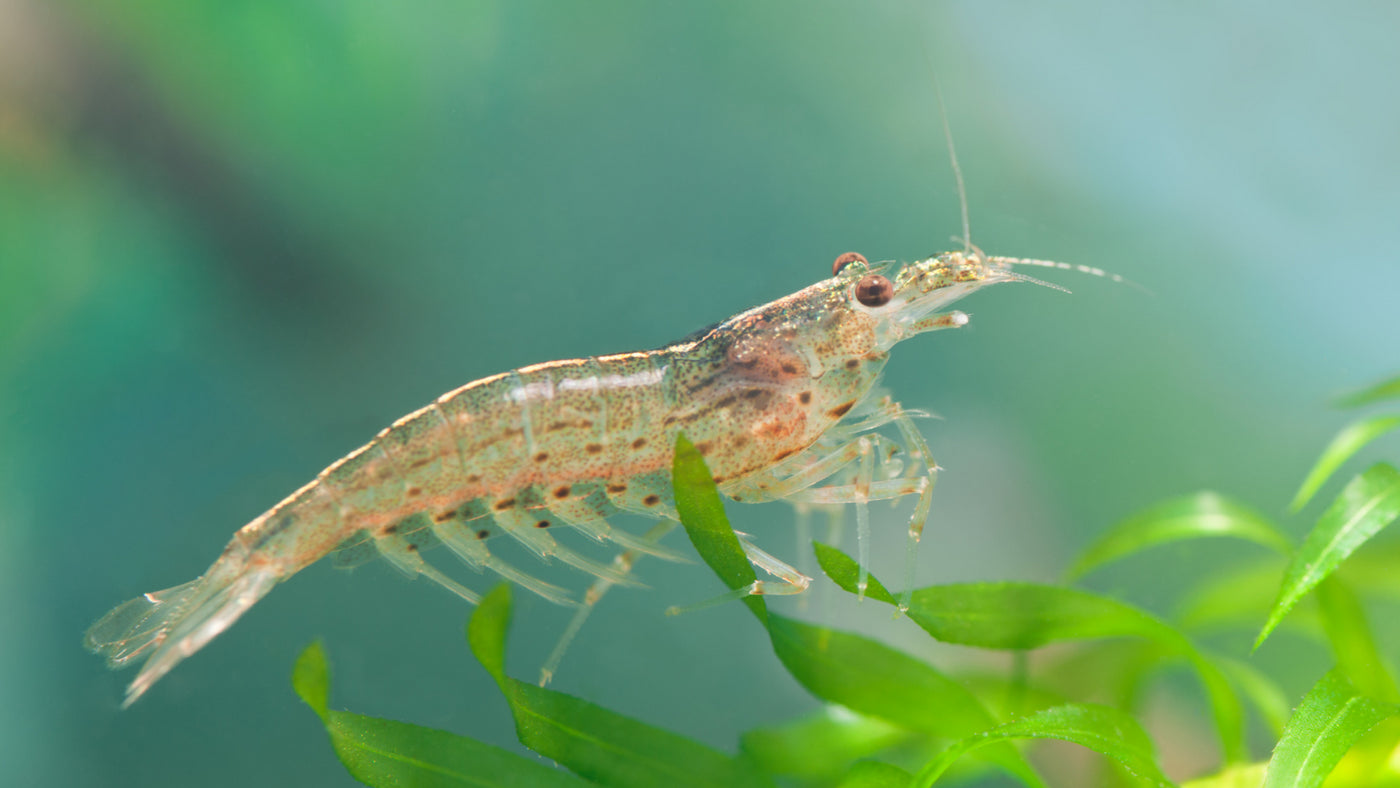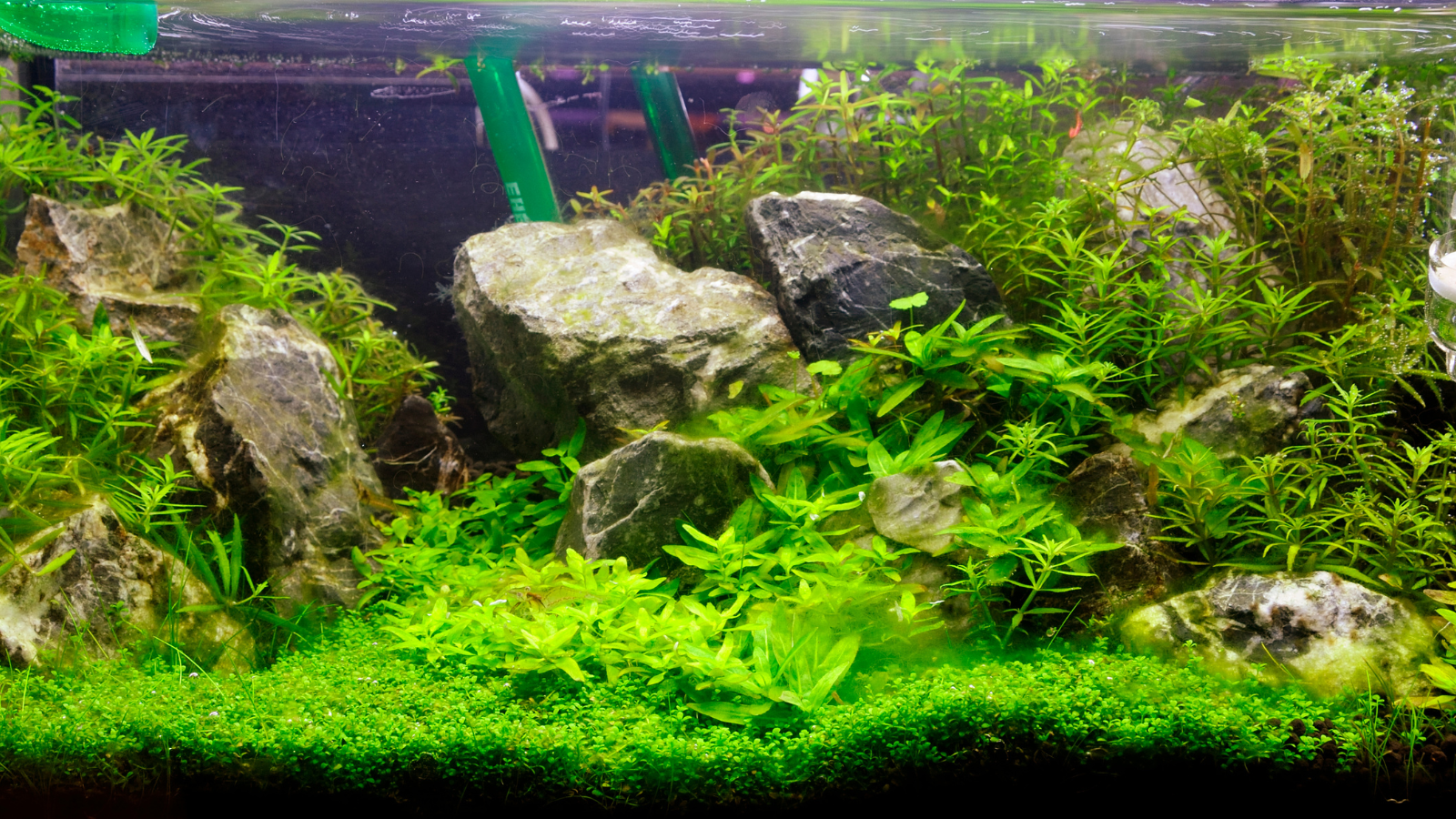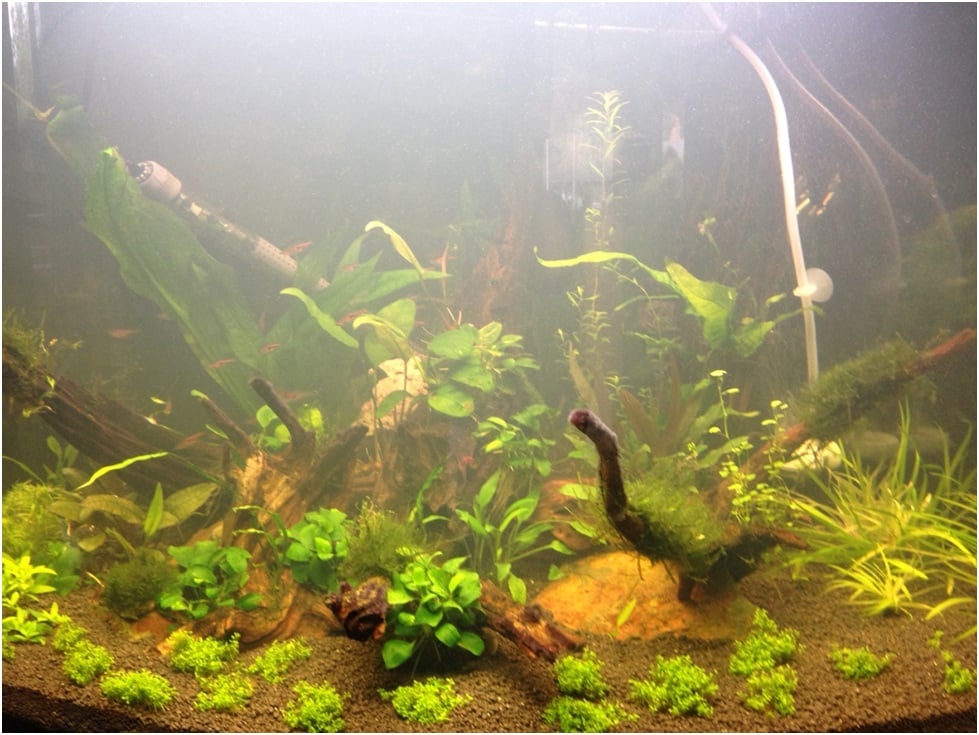
Aquarium clean up crew
"Clean up crew" is the key to successful aquarium management.
When deciding to set up a saltwater aquarium or freshwater aquarium , no matter what tank size, the first thing that comes to mind is the fish, or rather the species of fish, that we want to keep in our tank surface.
Most aquascapers do not divide the fish into useful and decorative ones, they are mainly interested in appearance, colour, or size. We rarely consider adding fish purely to help with the cleaning of the aquarium. In this article, we will describe the species generally that will help you to maintain your entire tank.
But let's start from the beginning, you probably wonder why you need a "clean-up crews" if your aquarium will have a filter with all that high-quality media. Filtration is one of the key elements of the proper functioning of the aquarium, but sometimes it may turn out to be insufficient, so it needs support, and this support is provided by freshwater shrimp, freshwater snails, and fish.
Our aquarium clean up crews has a number of beneficial functions in our tank, such as:
- reducing the growth of nuisance algae
- cleaning the tank uneaten fish food
- cleaning of decaying plant matter.
Below we present to you the most useful members of any clean up crews and a little bit of information about each one:

Siamese algae eater
Characteristics: This bottom-dwelling tropical fish is found in mainland Southeast Asia.
A social fish feel best kept in a group of at least 4-5 individuals. In tank surfaces conditions, they grow up to 14 cm. Currently, this fish has been recognised as an endangered species.
Requirements: These are fish that grow to quite large sizes, therefore the freshwater tank we prefer is at least 240l, they need numerous hiding places, stone decorations, and roots. You can let them into a smaller tank when fighting algae, but with time, when they become larger, you should catch them because they can become territorial.
The main function in the aquarium: This fish will be perfect for a freshwater aquarium where we have a problem with algae such as: filamentous, green and soft algae and Rhizoctonia fungi. From our experience this fish prefers these algae and detritus before they reach full adult size. When they grow up their taste turn more into red algae.
Amano shrimp
Characteristics: The next member of clean up crew is the shrimp which is named after Japanese aquarist Takashi Amano who first introduced it with great success. Males grow up to 3 cm, females up to 4-5 cm. This shrimp is a peaceful species and perfect for a community aquarium.
Requirements: The aquarium for these shrimps should be quite spacious and planted with numerous small-leaved plants, mosses, and liverworts. It should have numerous hiding places. This shrimp is gregarious; therefore it would most probably feel more at home in a group of 6-8 of its own species. The water should be well oxygenated as the shrimps are quite tender.
Main function in the aquarium: We can undoubtedly confirm that this is the most diligent creature that could be in an aquarium, great algae eaters, a group of such shrimps is able to clean the infestation of algae, e.g. hair algae, in one day. In addition, it eats the leftover food in the nooks and crannies, it is literally a "cleaning" shrimp because they remove dead fish from the aquarium very quickly, before the aquarium owner realizes that such a fish has died. In addition, it will work well in the initial stages of aquarium development when we are dealing with film algae or diatoms

Otocinclus
Characteristics: Mild and companion fish growing to 4 cm. In its natural environment, it lives in the upper and central Amazon water. Can be kept in a social aquarium.
Requirements: This member of aquarium clean up crew can be safely put into a 30-liter freshwater aquarium. It prefers soft water and are quite sensitive to changes in water parameters. Preferring groups, it is best to keep them in a group of at least 5 individuals. The fish likes algae, but its diet should be supplemented with dried plant based foods.
The main function in the aquarium: they are typical algae eaters, thanks to its small size it effectively cleans hard-to-reach corners and leaf blades in all tank size . It specialises in eating: slime mould present at the beginning, diatoms, brown algae present on the tank walls.
Black Molly
Characteristics: Next member of clean up crew is vigorous, sociable fish, suitable for a general aquarium. Naturally inhabits the areas of Central and South America. They can grow up to 9 cm.
Requirements: The fish also requires well-oxygenated water, the water temperature must not be lower than 25 ° C, and there must be no sudden drop in temperature. We recommend regular water changes. A suitable aquarium for this fish is +100l which would be suitable for a small group.
The main function in the aquarium: Few aquarists know that the Black Molly is also very useful algae eaters. Fight against algae just like Otocinclus and Amano shrimps. These algae eating species are effective at removing algae such as brown algae, and diatoms. Something you may not know is that these fish also feed on cyanobacteria, which has been confirmed by a large group of aquarists. It is worth noting that cyanobacteria will be eaten more willingly by young individuals than older ones.
When deciding on ornamental fish, it is worth considering Endler's guppies because they have a beautiful coloration, but also are useful, one of their main meals is green algae.

Endler's guppy
Characteristics: Meet Following clean up crew member Endler. It is a small fish, naturally occurring in Venezuela, but successfully breed in aquarium conditions. Males reach only 2.5 cm, while females 4 cm, which is why they are a very good solution for small aquariums. They live in good conditions for about 2 years, on average in lower conditions, about 7 months.
Requirements: The fish is undemanding, therefore it is considered easy to breed. Be careful with the stocking of the aquarium in which the guppies are kept. The long and colorful fins of males can become the prey of fish that like to nibble the fins of other individuals.
The main function in the aquarium: Their main advantage is their beautiful appearance and small technical requirements in the aquarium, but it is better to start with Endler guppies than, for example, Neon Tetras, because guppies also are known as algae eaters.

Hill Stream Loach
Characteristics: Upcoming freshwater cleanup crew member is Hill Stream Loach. Found in Asian areas such as: China, Vietnam, Cambodia. In their natural environment, they live in areas heavily exposed to the sun, which favours the growth of algae. It grows up to 7 cm. A companion fish, territorially oriented, but you can successfully keep a few.
Requirements: This tank inhabitants requires clear, well-oxygenated water that is filtered at least 10 times an hour through a filter. The aquarium must contain numerous rocks with a sand bed, the aquarium must be heavily lightened.
The main function in the aquarium: This cleanup crew is great at cleaning decorations such as stones or roots, they eat algae from them, it is very good at eating green algae.





